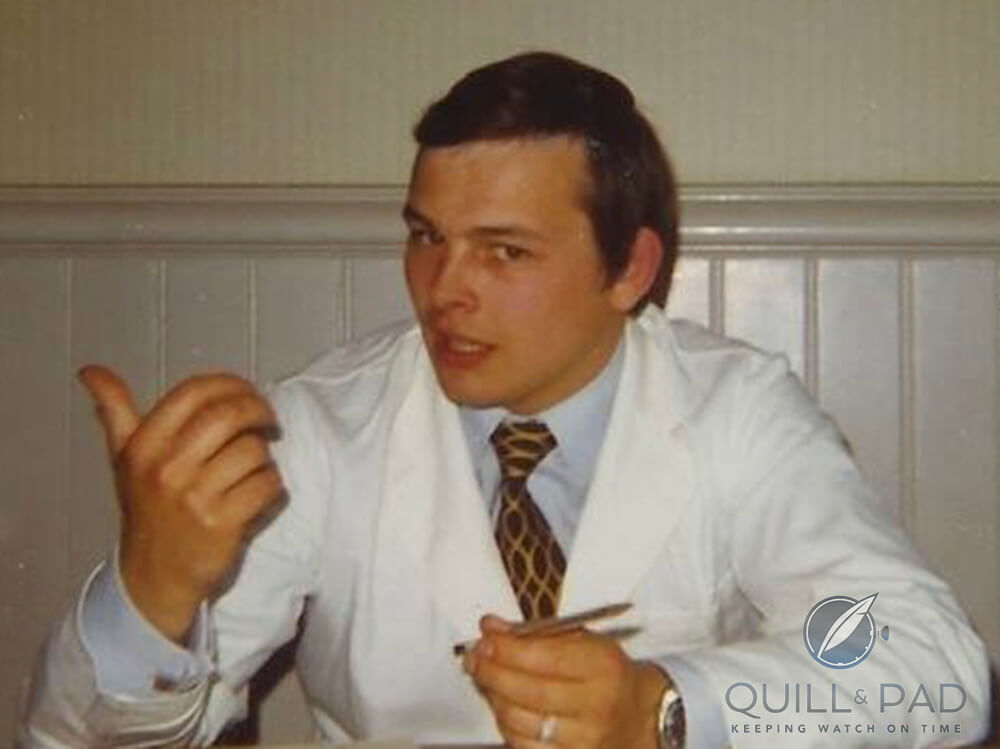
She ended up selecting ten designs for ten unique pieces, each of which will require its own custom movement. These animals are more a manifestation and a mashup of inner selves rather than accurate depictions of reality.Ĭox poured through ancient manuscripts selecting “animals” she liked and thought would work as automata. These imaginary “animals” were drawn by explorers who went out into the world and tried to describe what they “saw,” which was influenced by their superstitions, religions, biases, and what they wanted to see and say. This reflected the belief that the world itself was the word of God and that every living thing had its own special meaning.” The natural history and illustration of each beast was usually accompanied by a moral lesson.

Originating in the ancient world, bestiaries were made popular in the Middle Ages in illustrated volumes that described various animals and even rocks.
Horology apprenticeship series#
That was a huge undertaking as the historic machines that she needed were as collectable (and as expensive) as the objects that she was working on.Īs well as restoring antique automata (she does a lot of work on singing birds), Cox decided that she wanted to make a series of unique piece automata based on thirteenth-century bestiaries and illuminated medieval manuscripts.įrom Wikipedia: “ a bestiary (from bestiarum vocabulum) is a compendium of beasts. She also gives classes in traditional guilloche. Then she returned to the USA and set up her own workshop in Seattle for conservation and restoration. After that she worked at a museum in the Netherlands, which was basically an apprenticeship working on automata and music boxes. But it meant sourcing her own automates and basically creating her own curriculum.Ĭox completed a master’s degree in the conservation and restoration of clocks and related dynamic objects. So she wanted to study with Reed, and he agreed to let her do a foundation course in clockmaking with the aim of specializing in automata. This was the object that really captured her attention because when it was exhibited at the Exposition Universelle (World’s Fair) in Paris in 1867 people were amazed at how lifelike it was, down to the movement of water reflecting off the feathers. Matthew Reed, her tutor at West Dean had worked on the eighteenth-century Silver Swan automaton, which Cox had learned about while studying philosophy. West Dean was then the only school in the world where one could learn the traditional hand skills for these types of traditional horology. So when she finished her philosophy degree, she enrolled in watchmaking school to learn micro-mechanics, engineering, manufacturing small components, and finishing as a way to work with these historical objects and learn the skills to make them.Īfter qualifying as a watchmaker, she went to West Dean College in the UK to study eighteenth-century clockmaking.


At the time his wristwatch was really taking off, and I had responsibility for the assembly and finishing of the Simplicity series for three and a half years.Cox was fascinated by looking at philosophical problems from a tactile perspective, and automata were a practical application of these philosophical ideas. 2001 was an important year for, because that is when I started to work in the Vallée du Joux at Philippe Dufour’s atelier. So after school I worked with several companies: Roger Dubuis and Vacheron Constantin in Geneva and later Chronoswiss in Munich. After graduating cum laude from the Technical School (section watchmaking) in Karlstein, Austria I was really hungry to learn as much as I could about haute horology and complications these are the kinds of things you have to learn from others and there were no sources for this in Austria at that time. It surprised me because there are so many parallels with my personal story….The short version is that, like Winnerl, I am also Austrian and also left my homeland to further and deepen my watchmaking experience ‘where the action was’ in my case Germany and Switzerland. You might say the interest arose naturally after I had one of his ship’s chronometers in my hands, and learned that Winnerl originally also came from a farming family.


 0 kommentar(er)
0 kommentar(er)
